Atopic dermatitis
• also referred to as atopic eczema; eczema = "boiling
over"
• intensely pruritic inflammatory skin disorder associated with
"atopy": asthma,
hayfever, and allergic conjunctivitis
• strong familial aggregation
• "The rash that itches, or the itch that
rashes?"
Pathogenesis
• basic defect in atopic dermatitis is unknown, but there are
several characteristic
physiologic and immunologic derangements in "atopic" individuals:
(type 2 helper T cells producing Il-4 and IL-5)
- elevated serum levels of IgE
- impaired cutaneous barrier function
(increased transepidermal water loss leads to dry skin)
- skin colonization and infection by Staphylococcus aureus
(the toxins of which may serve as superantigens to promote cutaneous inflammation)
- the role of dietary factors in atopic dermatitis is probably overemphasized
Clinical
• unlike psoriasis the appearance or basic morphology of
atopic dermatitis is more
difficult to describe
• pruritus is usually the most outstanding clinical feature
• depending on the acuity of the skin disease there can be:
- tiny coalescing edematous papules or papulovesicles
- excoriations
- crusting (if secondarily infected)
- xerosis (or dry, scaly skin)
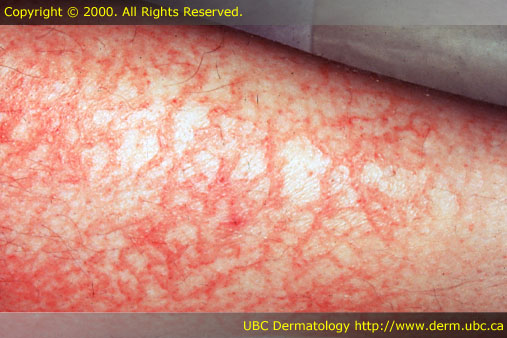
• depending on the acuity of the skin disease there can be:
- lichenification
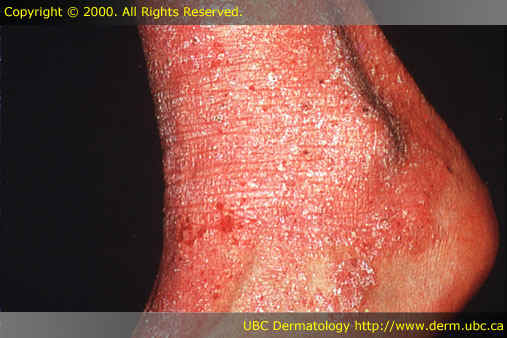
3 phases of atopic dermatitis:
- infantile (2 months to 2 years):
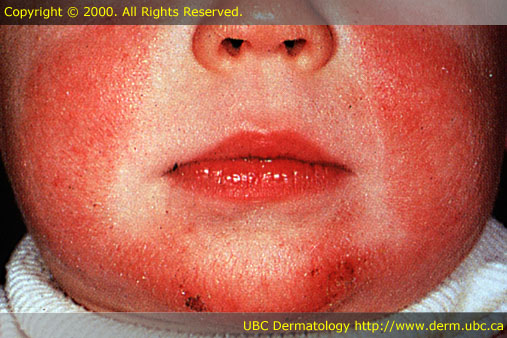
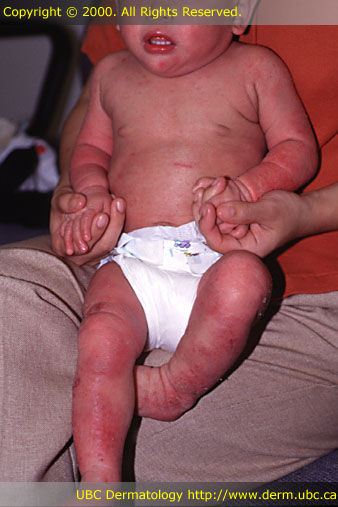
- childhood
-
greater tendency to xerosis
- flexural distribution
- more lichenification and excoriations
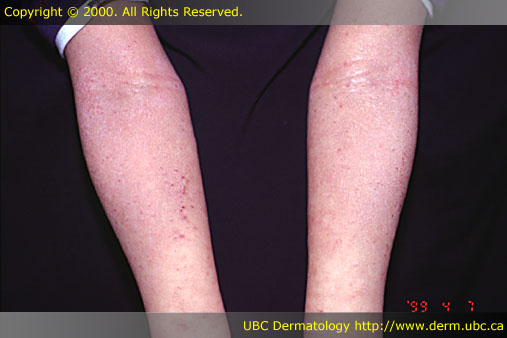
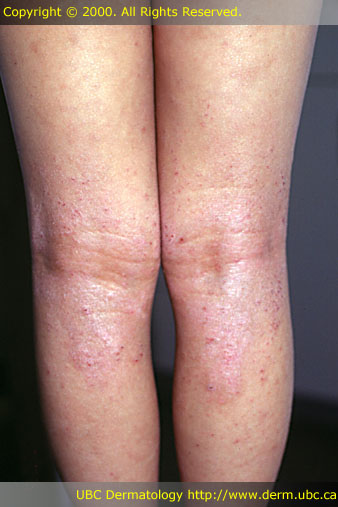
- adult
- atopic dermatitis generally improves gradually with age, and may remit by
late childhood or early adulthood
- lesser tendency to flexural localization
- in adults, atopic dermatitis may primarily affect the hands
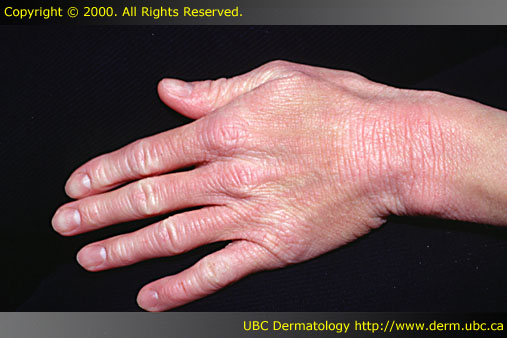
Treatment
• Avoid irritating factors
• Aggressive restoration of the cutaneous permeability barrier with bland emollients
and
• Topical glucocorticoids (creams or ointments)
• Topical or systemic anti-staphylococcal antibiotics
• Oral antihistamines